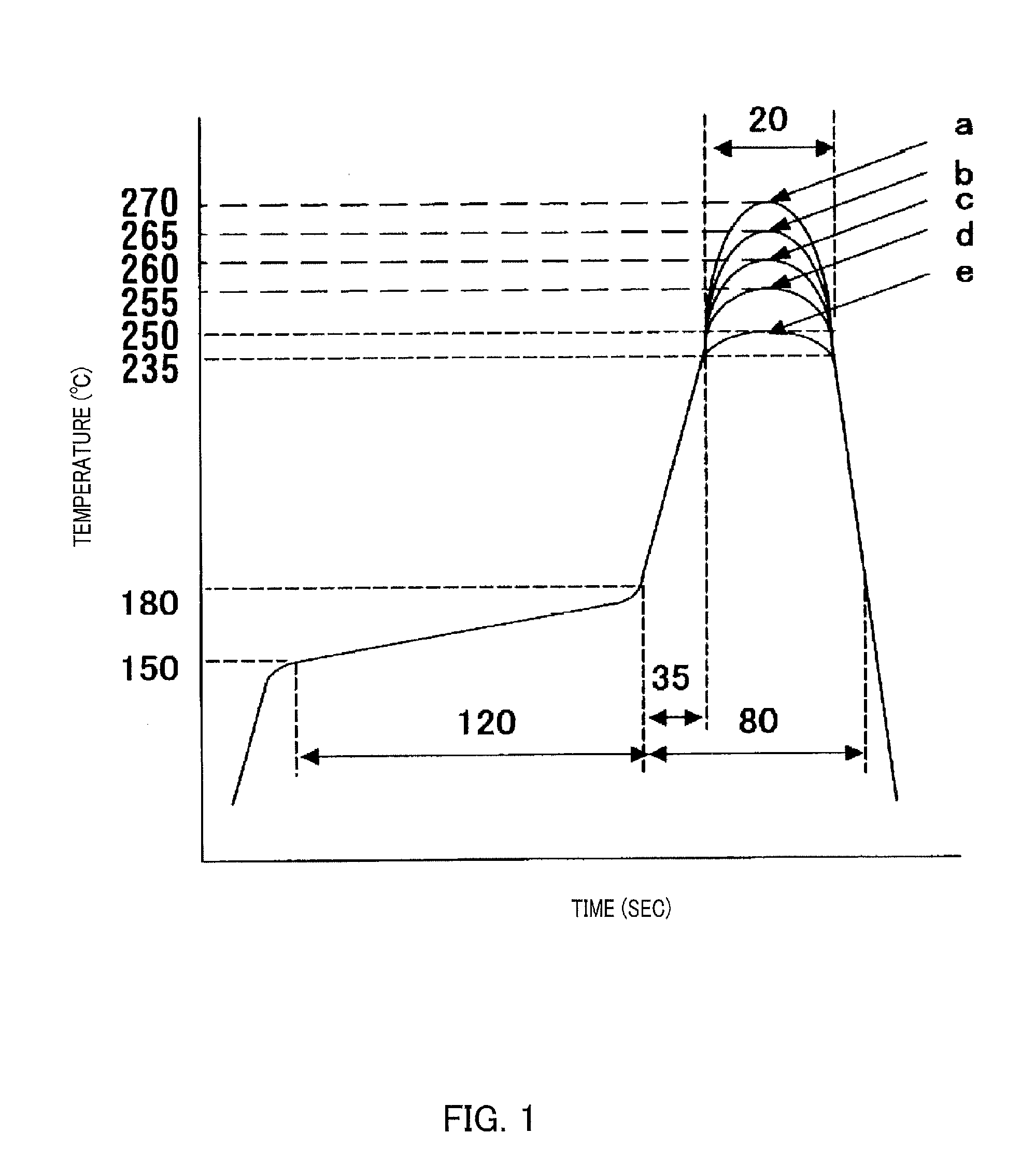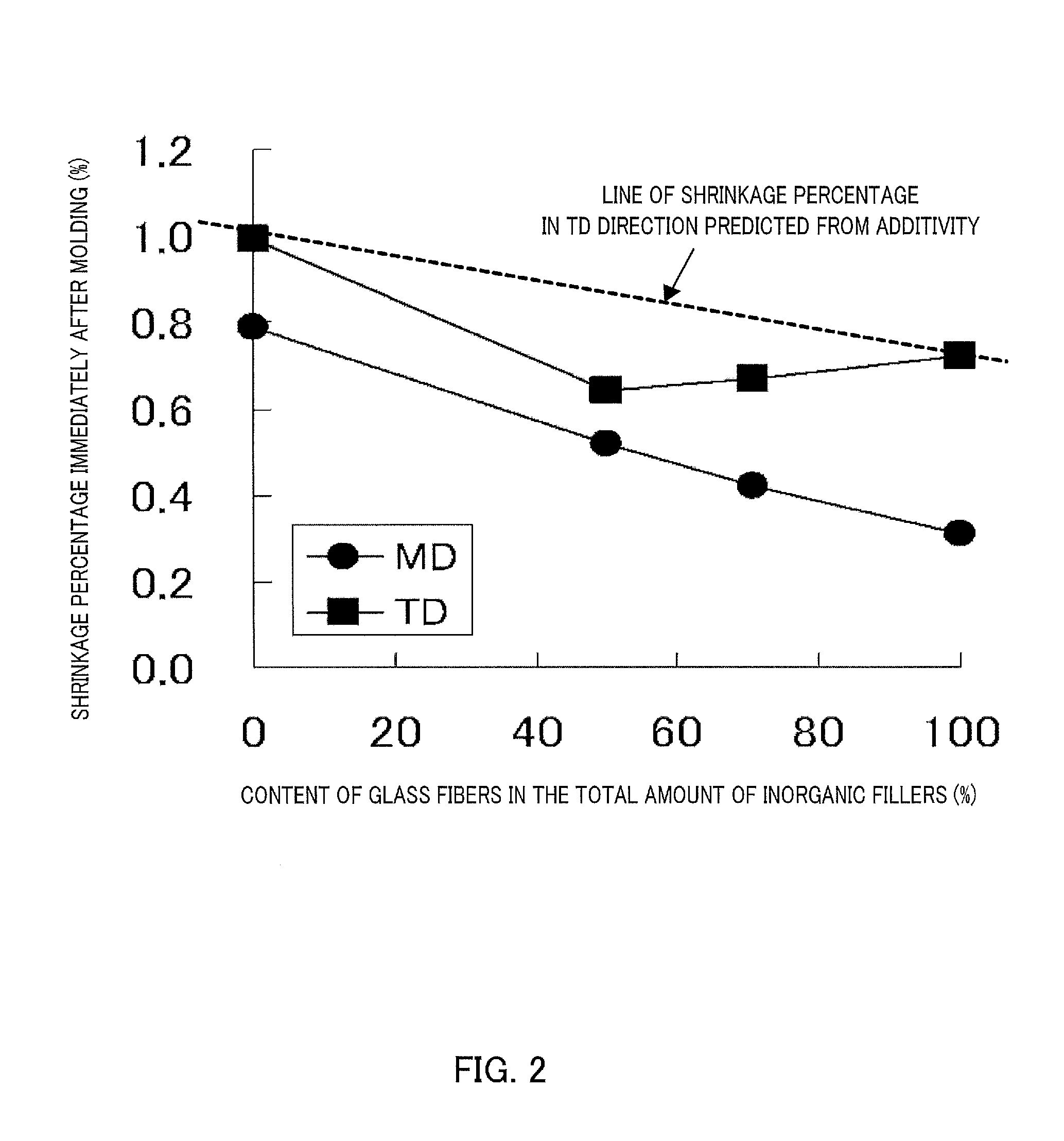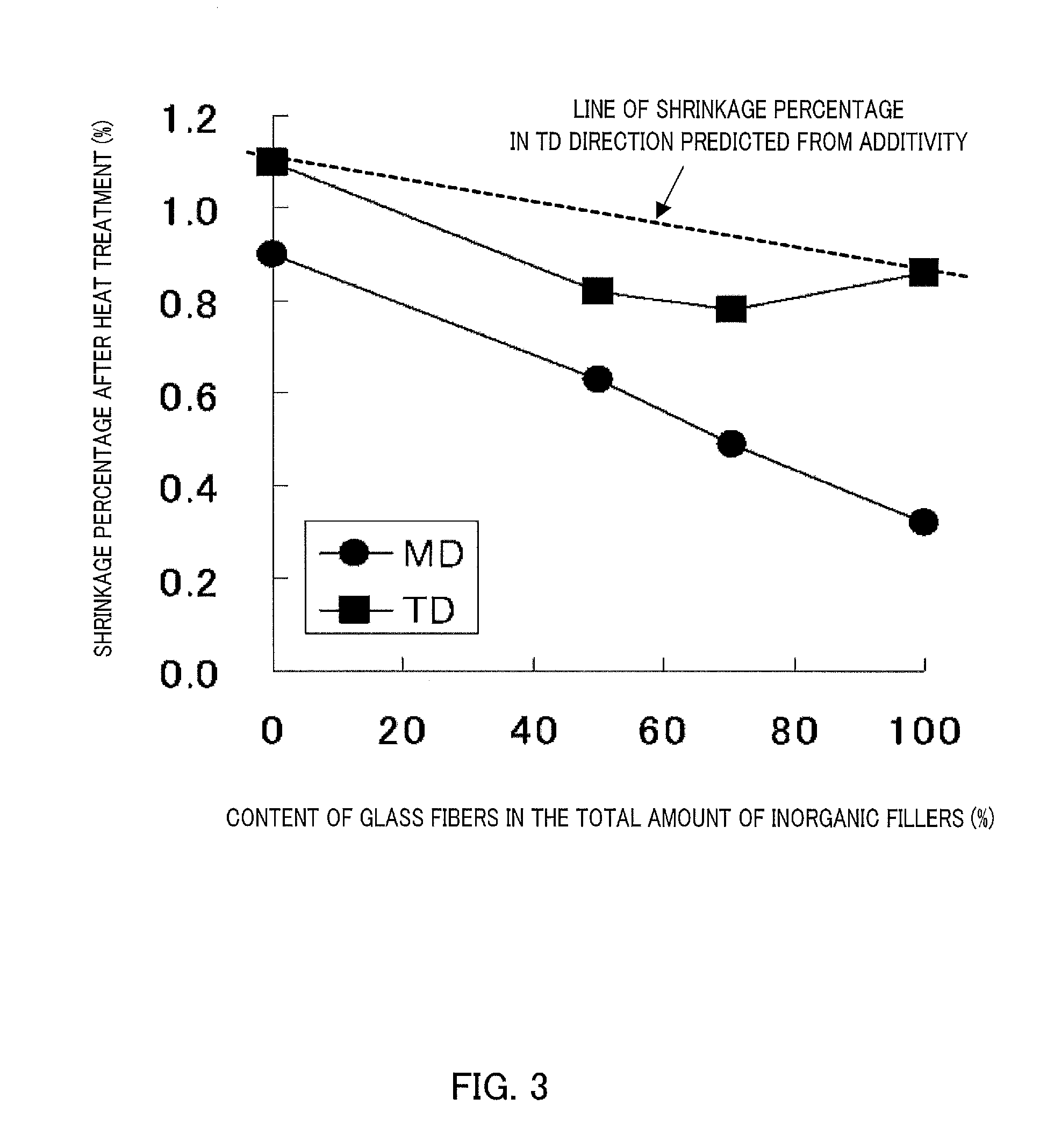Thermoplastic resin composition for reflector, reflector plate, and light-emitting diode element
- Summary
- Abstract
- Description
- Claims
- Application Information
AI Technical Summary
Benefits of technology
Problems solved by technology
Method used
Image
Examples
example 1
[0140]A polyamide resin (A1), an inorganic reinforcing material (B 1), and a white pigment (C) were mixed in a proportion shown in Table 1 using a tumbler blender. The obtained mixture was melt-kneaded in a twin-screw extruder TEX30α manufactured by The Japan Steel Works, Ltd. at a cylinder temperature of 340° C. and then extruded into a strand shape. The strand was cooled in a water tank, drawn by a pelletizer, and cut to thereby obtain a resin composition in a pellet shape. The results of the evaluation of physical properties of the obtained resin compositions are shown in Table 1.
[0141]Polyamide Resin (A1)
[0142]Composition: dicarboxylic acid component unit (terephthalic acid / 62.5 mol %, adipic acid / 37.5 mol %, where the total of the dicarboxylic acid component units is 100 mol %); diamine component unit (1,6-diaminohexane / 100 mol %, where the total of the diamine component unit is 100 mol %)
[0143]Intrinsic viscosity [η]: 0.8 dl / g
[0144]Melting point: 320° C.
[0145]Inorganic reinfor...
example 2
[0147]A resin composition was obtained in substantially the same manner as in Example 1 except that a polyamide resin (A1-2) having the following composition, intrinsic viscosity, and melting point was used, and the cylinder temperature of the twin screw extruder was set at 320° C.; and the obtained resin composition was evaluated for physical properties.
Polyamide Resin (A1-2)
[0148]Composition: dicarboxylic acid component unit (terephthalic acid: 100 mol %, where the total of the dicarboxylic acid component unit is 100 mol %),
[0149]Diamine component unit (1,12-diaminododecane: 100 mol %, where the total of the diamine component unit is 100 mol %),
[0150]Intrinsic viscosity [η]: 0.8 dl / g
[0151]Melting point: 302° C.
example 3
[0152]A resin composition was obtained in the same manner as in Example 1 except that a polycyclohexane dimethylene terephthalate resin (A2) having a melting point of 290° C. was used as a base polymer, and the cylinder temperature of the twin screw extruder was set at 310° C.; and the obtained resin composition was evaluated for physical properties.
PUM
| Property | Measurement | Unit |
|---|---|---|
| Temperature | aaaaa | aaaaa |
| Temperature | aaaaa | aaaaa |
| Percent by mass | aaaaa | aaaaa |
Abstract
Description
Claims
Application Information
 Login to View More
Login to View More - R&D
- Intellectual Property
- Life Sciences
- Materials
- Tech Scout
- Unparalleled Data Quality
- Higher Quality Content
- 60% Fewer Hallucinations
Browse by: Latest US Patents, China's latest patents, Technical Efficacy Thesaurus, Application Domain, Technology Topic, Popular Technical Reports.
© 2025 PatSnap. All rights reserved.Legal|Privacy policy|Modern Slavery Act Transparency Statement|Sitemap|About US| Contact US: help@patsnap.com



